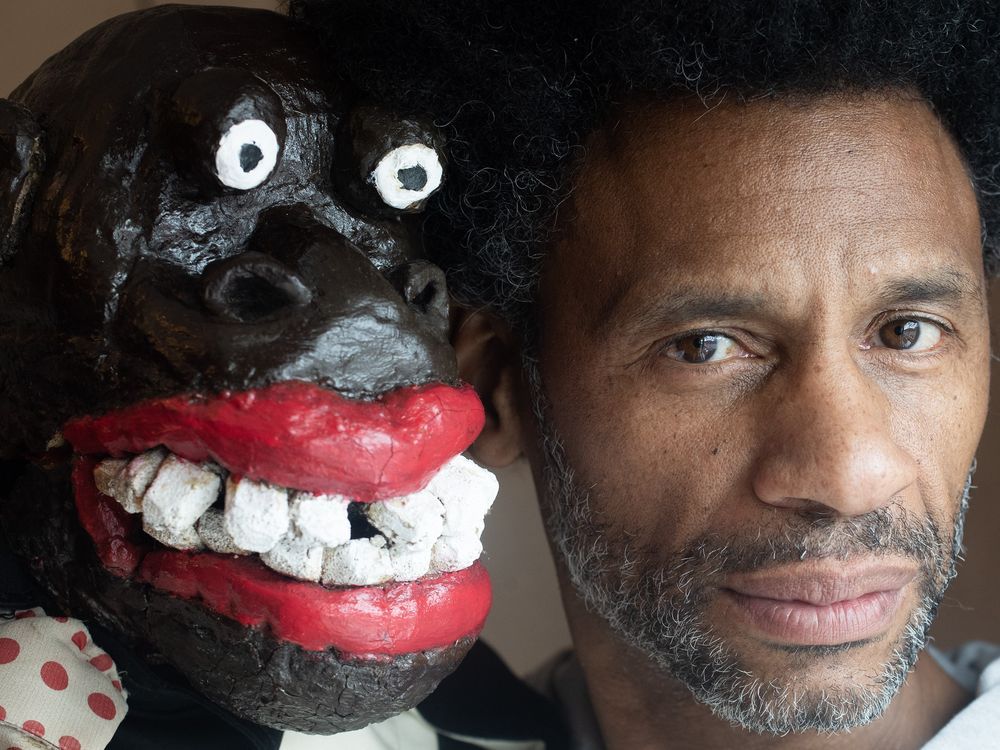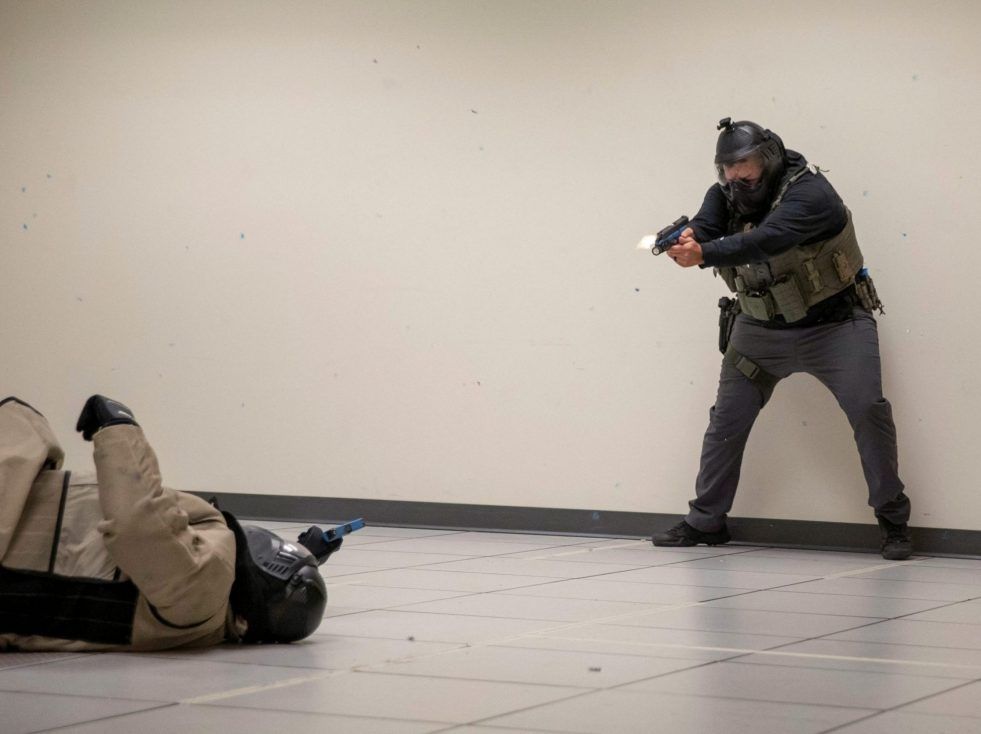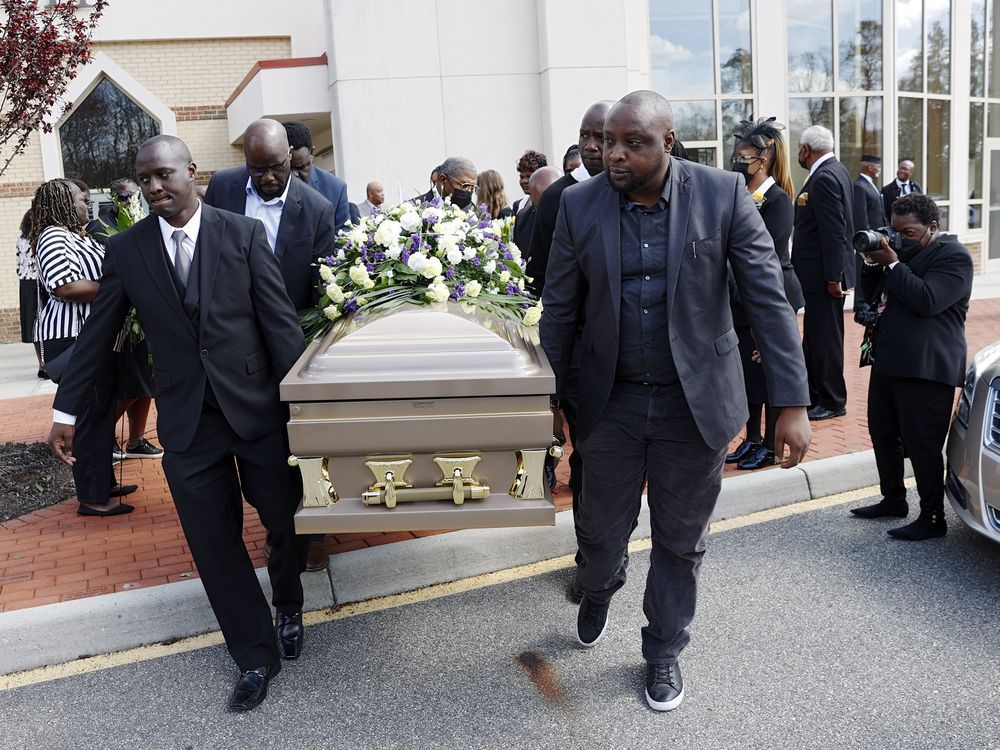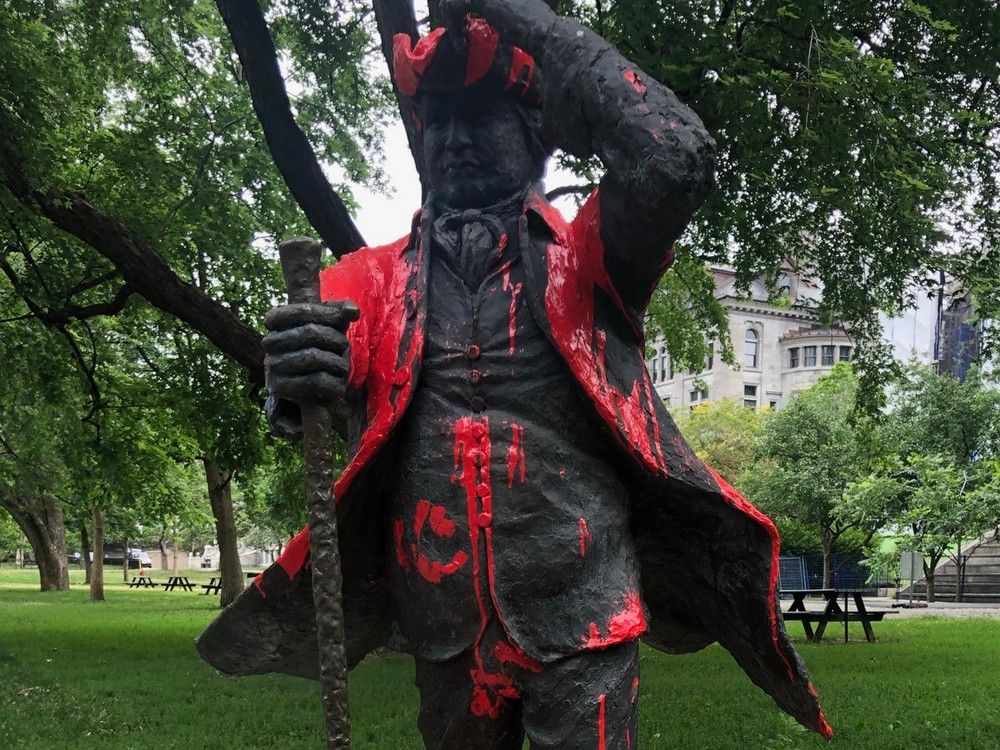Video shows Irvo Otieno pinned to floor before his death
Author of the article:Associated Press
Associated Press
Denise Lavoie And Sarah Rankin
Published Mar 21, 2023 • 4 minute read
DINWIDDIE, Va. — A group of sheriff’s deputies and other personnel at a Virginia mental hospital forcibly pinned patient Irvo Otieno to the ground until he was motionless and limp, then began unsuccessful resuscitation efforts, according to newly obtained surveillance video.
The video, which was obtained through a link included in public court filings, shows the workers pressing down on a prone handcuffed and shackled Otieno. His death March 6 while being admitted to Central State Hospital has led to second-degree murder charges against seven deputies and three hospital workers.
Relatives of the 28-year-old Otieno were shown the video last week by a prosecutor, Dinwiddie Commonwealth’s Attorney Ann Cabell Baskervill, who said at one point that she planned to publicly release it Tuesday. But attorneys for at least two of the defendants sought to block its release to the public, arguing that it could hinder a fair trial.
Otieno was brought to the hospital south of Richmond that provides psychiatric care after spending multiple days in law enforcement custody.
The video, which has no sound, shows a shackled and handcuffed Otieno being led into a room with tables and chairs. He is hauled toward a seat before eventually slumping to the floor.
An increasing number of workers lay their hands on him as he appears to start to move on the floor. At one point, it appears as many as 10 people are pressing down on his body. Otieno’s body is difficult to see at times, obscured by the employees on top of him or because the camera angle was blocked by someone standing.
The crowd steps back from his body, which appears limp. Resuscitation efforts eventually begin.
Final autopsy findings have not yet been released, though Baskervill has said in court that Otieno was smothered to death.
The prosecutor charged the 10 defendants through a process known as a criminal information. Baskervill has said the case will be presented to a grand jury “for a final determination of charges going forward.” A grand jury was meeting Tuesday morning, court records show.
Several defendants also had either bail hearings or a hearing dealing with the appointment of counsel.
The Associated Press sought comment about the video from defense attorneys for each of the defendants who have obtained counsel. None immediately responded to emails or phone calls.
Douglas Ramseur, who represents one of the hospital employees, told The Washington Post — which first obtained the footage — he was concerned that the court filing with the video link was made “with the intention of making the information available to the media and public after having received a motion by the defense seeking to prevent just such a disclosure.”
“We are considering all our legal remedies,” Ramseur wrote in an email, the newspaper reported.
Otieno’s family spoke at a news conference last week after seeing the footage, which they called heartbreaking and disturbing. They have equated his treatment to torture and called on the U.S. Department of Justice to intervene in the case.
The family is being represented by Ben Crump, a prominent civil rights attorney who also represented the family of George Floyd. Crump has said Otieno’s treatment has close parallels with Floyd’s killing in police custody in Minneapolis in 2020.
“When we think about the tragic killing of George Floyd, you say, ‘Why would anybody, why would any law enforcement officer, put a knee on the neck of a person who is face down, handcuffed and restrained?”‘ Crump said at a news conference last week. “Would anybody not have enough common sense to say, ‘We’ve seen this movie before?”‘
Another attorney for the family, Mark Krudys, didn’t respond to a request for comment Monday.
Otieno, whose first name was pronounced “Ivo,” was 4 when his family emigrated to the U.S. from Kenya. He grew up in suburban Richmond and began dealing with mental health issues during his last year of high school, his mother has said.
He was experiencing mental distress at the time of his initial encounter with law enforcement earlier this month, according to this family. That set off a chain of events that led to him spending several days in custody, first at a local hospital and then at a jail, before his death at the state hospital.
While Otieno was in jail, he was denied access to needed medications, the family’s attorneys have said. The family also viewed video from that facility Thursday, which they said showed Otieno was subjected to further brutality by unidentified officers. That video has not been made available.
Virginia Gov. Glenn Youngkin has said the case is a grim reminder of why the state’s mental health system “needs transformation at every level.” He has also called on the public to respect the ongoing judicial process.

 torontosun.com
torontosun.com
Author of the article:Associated Press
Associated Press
Denise Lavoie And Sarah Rankin
Published Mar 21, 2023 • 4 minute read
DINWIDDIE, Va. — A group of sheriff’s deputies and other personnel at a Virginia mental hospital forcibly pinned patient Irvo Otieno to the ground until he was motionless and limp, then began unsuccessful resuscitation efforts, according to newly obtained surveillance video.
The video, which was obtained through a link included in public court filings, shows the workers pressing down on a prone handcuffed and shackled Otieno. His death March 6 while being admitted to Central State Hospital has led to second-degree murder charges against seven deputies and three hospital workers.
Relatives of the 28-year-old Otieno were shown the video last week by a prosecutor, Dinwiddie Commonwealth’s Attorney Ann Cabell Baskervill, who said at one point that she planned to publicly release it Tuesday. But attorneys for at least two of the defendants sought to block its release to the public, arguing that it could hinder a fair trial.
Otieno was brought to the hospital south of Richmond that provides psychiatric care after spending multiple days in law enforcement custody.
The video, which has no sound, shows a shackled and handcuffed Otieno being led into a room with tables and chairs. He is hauled toward a seat before eventually slumping to the floor.
An increasing number of workers lay their hands on him as he appears to start to move on the floor. At one point, it appears as many as 10 people are pressing down on his body. Otieno’s body is difficult to see at times, obscured by the employees on top of him or because the camera angle was blocked by someone standing.
The crowd steps back from his body, which appears limp. Resuscitation efforts eventually begin.
Final autopsy findings have not yet been released, though Baskervill has said in court that Otieno was smothered to death.
The prosecutor charged the 10 defendants through a process known as a criminal information. Baskervill has said the case will be presented to a grand jury “for a final determination of charges going forward.” A grand jury was meeting Tuesday morning, court records show.
Several defendants also had either bail hearings or a hearing dealing with the appointment of counsel.
The Associated Press sought comment about the video from defense attorneys for each of the defendants who have obtained counsel. None immediately responded to emails or phone calls.
Douglas Ramseur, who represents one of the hospital employees, told The Washington Post — which first obtained the footage — he was concerned that the court filing with the video link was made “with the intention of making the information available to the media and public after having received a motion by the defense seeking to prevent just such a disclosure.”
“We are considering all our legal remedies,” Ramseur wrote in an email, the newspaper reported.
Otieno’s family spoke at a news conference last week after seeing the footage, which they called heartbreaking and disturbing. They have equated his treatment to torture and called on the U.S. Department of Justice to intervene in the case.
The family is being represented by Ben Crump, a prominent civil rights attorney who also represented the family of George Floyd. Crump has said Otieno’s treatment has close parallels with Floyd’s killing in police custody in Minneapolis in 2020.
“When we think about the tragic killing of George Floyd, you say, ‘Why would anybody, why would any law enforcement officer, put a knee on the neck of a person who is face down, handcuffed and restrained?”‘ Crump said at a news conference last week. “Would anybody not have enough common sense to say, ‘We’ve seen this movie before?”‘
Another attorney for the family, Mark Krudys, didn’t respond to a request for comment Monday.
Otieno, whose first name was pronounced “Ivo,” was 4 when his family emigrated to the U.S. from Kenya. He grew up in suburban Richmond and began dealing with mental health issues during his last year of high school, his mother has said.
He was experiencing mental distress at the time of his initial encounter with law enforcement earlier this month, according to this family. That set off a chain of events that led to him spending several days in custody, first at a local hospital and then at a jail, before his death at the state hospital.
While Otieno was in jail, he was denied access to needed medications, the family’s attorneys have said. The family also viewed video from that facility Thursday, which they said showed Otieno was subjected to further brutality by unidentified officers. That video has not been made available.
Virginia Gov. Glenn Youngkin has said the case is a grim reminder of why the state’s mental health system “needs transformation at every level.” He has also called on the public to respect the ongoing judicial process.

Video shows Irvo Otieno pinned to floor before his death
A group of sheriff's deputies and other personnel at a Virginia mental hospital forcibly pinned patient Irvo Otieno to the ground until he was motionless and limp
![puppet-racism-20230323[1].jpg puppet-racism-20230323[1].jpg](https://forums.canadiancontent.net/data/attachments/16/16014-e427612126c4946aca293d47d4963e08.jpg)














